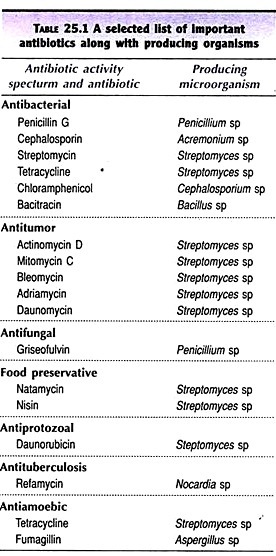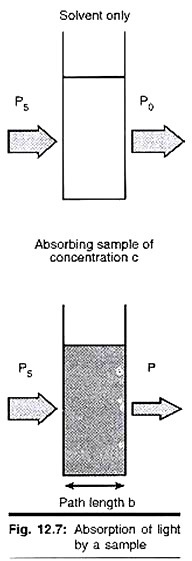Human Nervous System: Function and Types!
1. Sensory input, that is, the detection of stimuli by the receptors, or sense organs (e.g., eyes, ears, skin, nose and tongue).
2. Transmission of this input by nerve impulses to the brain and spinal cord, which generate an appropriate response.
3. Motor output, that is, carrying out of the response by muscles or glands, which are called effectors.
Two types of cells constitute the nervous system— neurons and neuroglia. The neurons conduct impulses and the neuroglia support and protect the neurons. A neuron consists of a cell body called cyton, and two types of processes—dendrite and axon.
Dendrites or Dendron’s:
These are hair like processes connected to the cyton. They receive stimulus, which may be physical, chemical, mechanical or electrical, and pass it on to the cyton.
Cyton:
It is the cell body, with a central nucleus surrounded by cytoplasm.
Axon:
From one side of the cyton arises a cylindrical process filled with cytoplasm. This process is called axon. It is the longest part of the neuron. It transmits impulse away from the cyton. Its tip has a swelling called axon bulb. Generally, a neuron has one axon.
The ending of an axon may be branched. These endings are called synaptic terminals. The gap between a synaptic terminal and the dendrite of another neuron or an effecter cell is called a synapse.
How do we feel a hot or cold object? How do we feel pain? Why do different things have different smells and tastes? There are thousands of receptor cells in our sense organs. They detect stimuli such as heat, cold, pain, smells and tastes.
There are different types of receptors such as algesireceptors (for pain), tango receptors (for touch), gustatoreceptors (for taste), olfactoreceptors (for smell), and so on. The stimulus received by a receptor is passed on in the form of electrical signals through the dendrites of a neuron to the cyton of the neuron.
The cyton transmits only strong impulses. Weak impulses are not further transmitted. An impulse passed on by the cyton travels along the axon of the neuron. When it reaches the end of the axon, it causes the axon bulb to release a chemical which diffuses across the synapse and stimulates the dendrites of the adjacent neuron.
These dendrites in turn send electrical signals to their cell body, to be carried along the axon. In this way, the sensation from the receptor is passed on to the brain or spinal cord. A signal from the brain is similarly passed on to the effector, which carries out the appropriate response.
Eat some sugar. You will find it tastes sweet. If you block your nose with your fingers there is no difference in its taste. It still tastes sweet because sugar has no smell that can also contribute to the taste.
Block your nose again while eating lunch. You will find that the blocked nose makes a difference in appreciating the taste of various food items. When an item has taste as well as smell, it needs the gustatoreceptors on the tongue as well as the olfactoreceptors in the nose to transmit its stimuli to the brain for the full appreciation of its taste.
For example, you may not be able to distinguish between mashed papaya and mashed banana with your nose blocked and eyes closed. The gustatoreceptors and olfactoreceptors together make us appreciate any food better. This is the reason why food seems tasteless when you have a cold and your nose is blocked.
In humans and vertebrates, the nervous system may be divided into the (1) central, (2) peripheral, and (3) autonomic nervous system.
Contents
Central nervous system:
The central nervous system consists of the brain and the spinal cord.
Brain:
It is the most important coordinating centre in the body. It is lodged in the brain box, or cranium, which protects it. The brain is covered by membranes called meninges. Between the membranes and the brain and also inside the brain, there is a characteristic fluid, called cerebrospinal fluid. This also protects the brain.
The brain may be divided into three parts—forebrain, midbrain and hindbrain:
1. The forebrain (cerebrum) is the anterior part, consisting of two large hemispheres divided by a longitudinal fissure. The surface of the hemispheres has many folds and is called cerebral cortex. The cerebral cortex consists of numerous neurons, and the folds serve to increase the surface area so that the maximum number of neurons can be present.
The cerebral hemispheres are seats of intelligence and voluntary action. The forebrain also contains olfactory lobes, which are the centres of smell; and the diencephalon, which has centres of hunger, thirst, etc. To the floor of the diencephalon is attached the pituitary gland.
2. The midbrain includes optic lobes, which are the centres of vision.
3. The hindbrain is the posterior part, located below the forebrain. It consists of the cerebellum, pons and medulla oblongata. The cerebellum is the coordination centre, and maintains the body’s posture and balance. It also controls some precise voluntary actions such as those involved in writing and speech.
The medulla oblongata in the brain stem is the centre of involuntary actions, like swallowing, coughing, sneezing, salivation, vomiting, heartbeat and breathing. The medulla oblongata is continued into the spinal cord. The pons relays information between the cerebellum and the cerebrum.
Spinal cord:
It is a long cord which arises from the medulla oblongata and rims through the vertebral column (backbone). The vertebral column protects the spinal cord. The spinal cord is also covered by meninges.
A cross sections of the spinal cord shows the central canal, which is filled with cerebrospinal fluid. Around the canal are clusters of cytons, which form the grey matter.
The peripheral part has mainly axons and is called white matter. From each side of the spinal cord two roots, the dorsal and the ventral root, arise.
The dorsal root is joined by a nerve called sensory nerve, which picks up sensations from the sense organs (receptors). From the ventral root arises the motor nerve, which takes messages from the spinal cord to the muscles or glands (effectors).
Reflex action:
What happens when you touch something hot or your finger is pricked by a needle? You immediately pull your hand away, without even thinking why you are doing so. Such sudden involuntary responses to stimuli are examples of reflex action. The response may be different when your conscious thought process is involved. For example, when a doctor pricks you with an injection needle to inject a medicine into your arm, you do not withdraw your arm immediately.
Your conscious thinking tells you that the medicine is being administered to cure your disease. In this case, a message from the spinal cord goes to the cerebrum, the thinking part of your brain, and your thinking brain directs your arm to bear the pain and not pull away.
The spinal cord is the centre of reflex action. Reflex actions are produced by reflex arcs, which may be formed anywhere along the spinal cord, nearest to the receptor and effecter. A reflex arc is formed by a sensory nerve and a motor nerve joined by a connecting nerve present in the spinal cord.
As the impulses do not have to travel all the way to the brain and back, the detection of stimuli and the completion of responses are faster.
Reflex action is an extremely quick action, which does not involve any thinking by the brain. If someone hits your leg with a hammer the leg is immediately withdrawn. In this type of reflex action the impact of the hammer (stimulus) received by the receptor is sent to the spinal cord through the sensory nerve. The message is received by the connecting nerve in the spinal cord.
The connecting nerve then sends a response through the motor nerve to the muscles (effectors) to pull the leg away. Thus, reflex action is a sudden, involuntary motor response to a stimulus. The flow of food in the alimentary canal, blinking in strong light or in response to a sudden movement in front of the eye, sneezing, coughing, yawning, hiccupping, shivering, etc., are also reflex actions.
Peripheral nervous system:
The peripheral nervous system includes 12 pairs of cranial nerves arising from the brain and 31 pairs of spinal nerves arising from the spinal cord. The nerves from the brain and the spinal cord connect the skeletal muscles and control their activity according to the directions and demands of the body. These nerves are, therefore, related to voluntary acts, i.e., they act according to our will.
Autonomic nervous system:
The autonomic nervous system controls and integrates the functions of internal organs like the heart, blood vessels, glands, etc., which are not under the control of our will.
The autonomic nervous system has two subdivisions: sympathetic and parasympathetic. The organs receive both sympathetic and parasympathetic nerves. The two types of nerves have opposite effects on the organs, i.e., if one is stimulatory, the other is inhibitory.
How does the nervous tissue cause the muscles to act?
When an electrical signal from a nerve cell reaches a synapse it causes the axon bulb to release a chemical. This chemical, which is discharged at the junction between the nerve cell and the muscle cell, causes the cell membrane of the muscle cell to move some ions in the muscle cell. This triggers a series of changes, ultimately causing the muscle to contract or relax.


